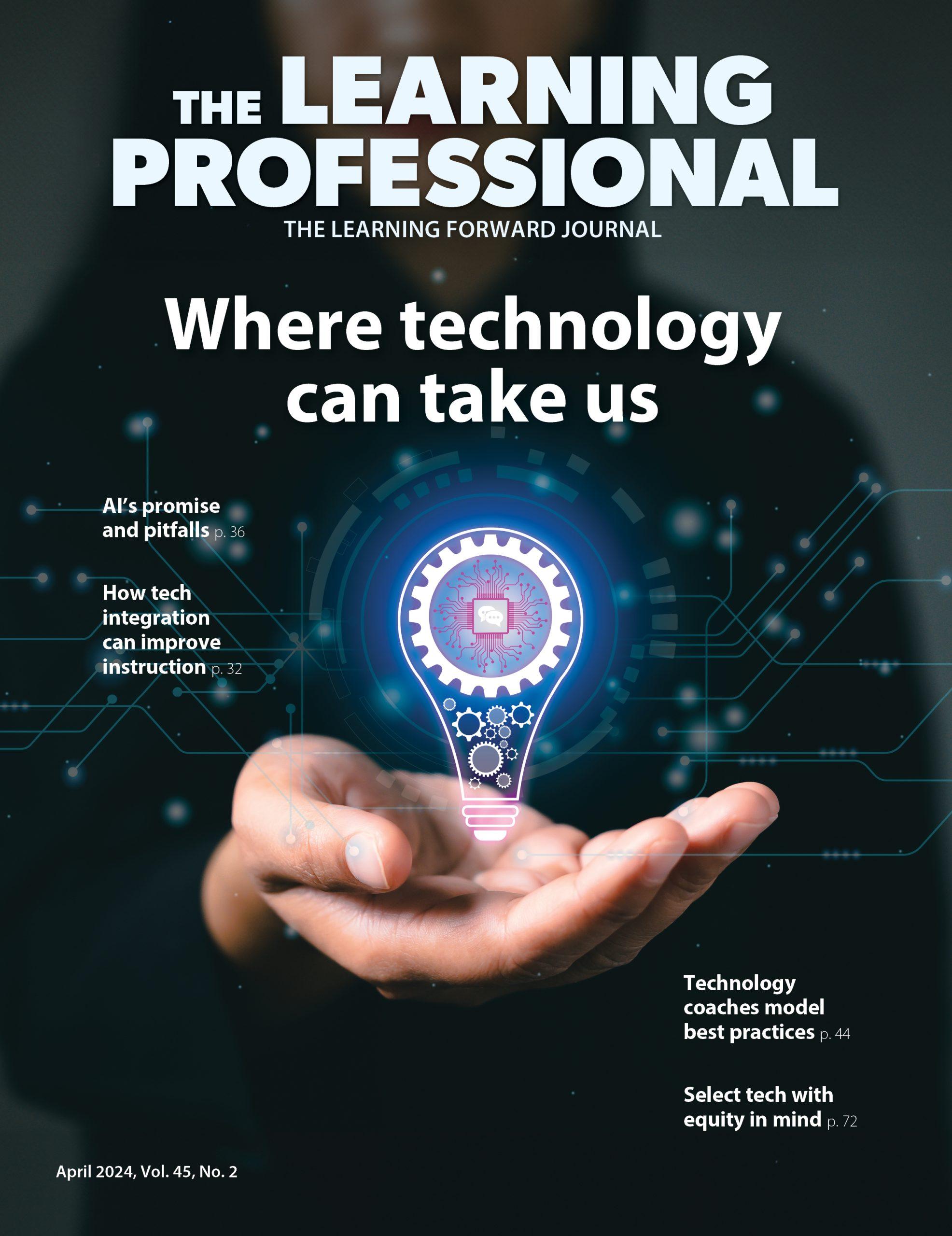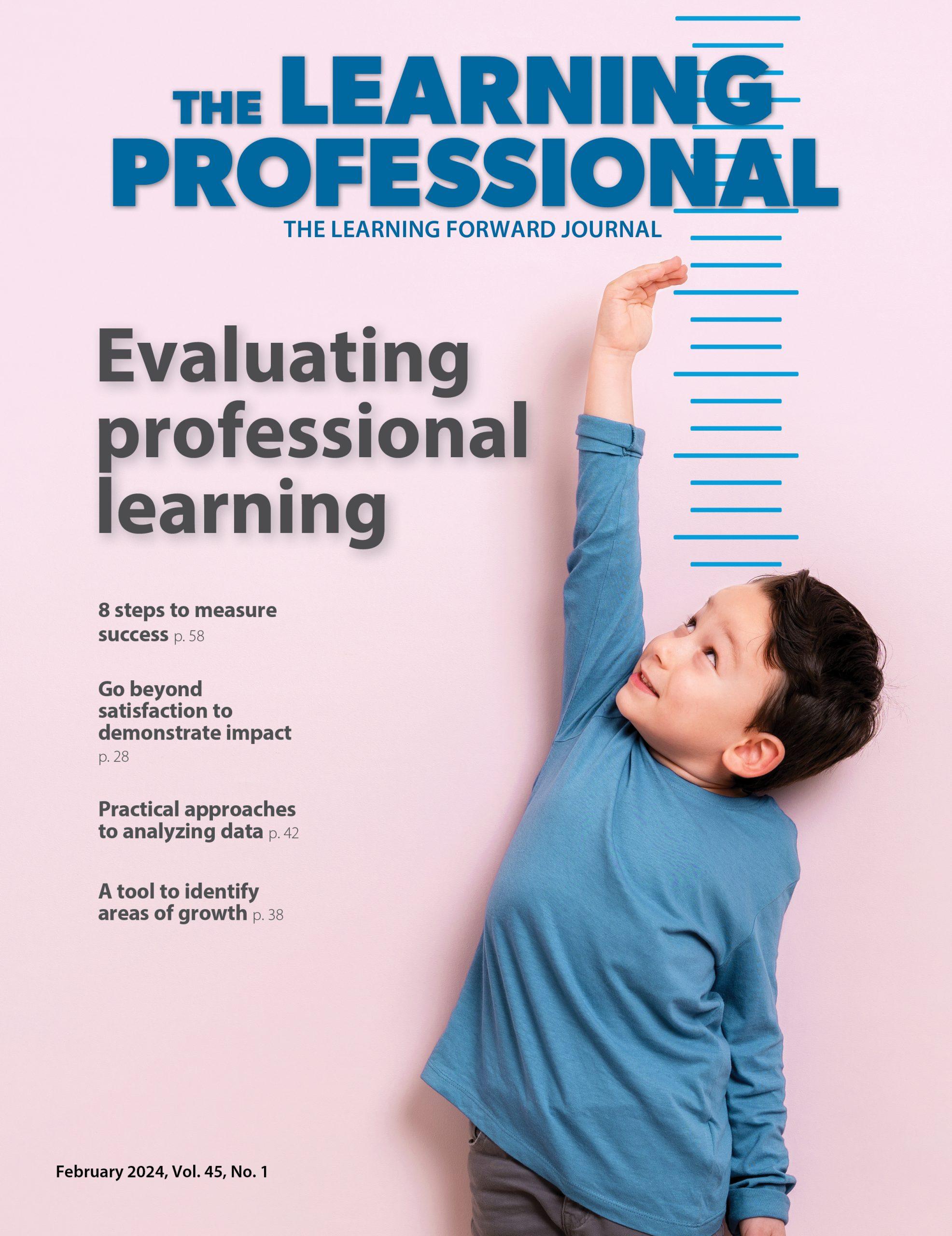Lessons From Research
Instructional rounds contribute to communities of practice
By Joellen Killion
Categories: Learning communities, ResearchDecember 2016
What the Study Says
When district and school administrators and other key leaders engage together in instructional rounds within schools, they develop social networks that assume characteristics of communities of practice. Within these communities, they build relationships and develop a common language and shared understanding about teaching and learning. The practice of instructional rounds is a form of organizational routine that elevates the importance of instructional leadership.
Researchers analyzed the development of social networks in three districts. They found limited association between the engagement in rounds and the establishment of social networks, yet they identified factors that can inform the implementation of rounds to increase instructional leadership. They connect administrators who are not typically connected with one another in an organizational routine designed to elevate quality teaching and learning.
Study description
Shifting administrators’ focus from managerial to instructional leadership requires changing their organizational routines. The study’s purpose was to explore how to promote the shift and to build relationships among administrators and supervisors within a district to increase technical, human, and social capital for instructional leadership. The study examined how instructional rounds brought administrators in diverse roles together in communities of practice to create new patterns of interaction, break down traditional barriers of district hierarchy and roles, and coalesce support for the improvement of teaching and learning.
Administrators participated in several instructional rounds per year for each of the two years of the study. An instructional round is one form of an organizational routine that brings administrators together in groups to conduct brief classroom observations, take notes, produce feedback, and report to one another about their observations.
Questions
Researchers posed two research questions:
- “To what extent do networks focused on teaching and learning in districts engaged in instructional rounds exhibit the characteristics of communities of practice?
- What is the relationship between the evolution of the networks focused on teaching and learning and the changes in the nature, extent, and understanding of rounds?” (p. 1029)
Methodology
Researchers applied social network analysis to assess the effects of instructional rounds in leveraging the connections among district and school administrators and supervisors to increase their focus on teaching and learning. They selected three of 11 districts that were members of a regional superintendents’ network in a Northeast state that began meeting in 2008-09 school year. The network met monthly over multiple years to increase “excellent and equitable outcomes for students” (p. 1029).
The three districts represented a range of demographics among the mostly suburban or exurban small to midsize districts within the network and differing levels of average family income (middle, higher, and highest income). Each district, labeled by its income level, had participated in the network since the 2008-09 inception. In one of the selected districts, the superintendent had spread the practice of instructional rounds to other administrators within his district before the study’s inception. The superintendents employed an adapted version of instructional rounds process that included a problem of practice, classroom observations, sharing observations, reflecting on implications, and sharing feedback with the host district and schools.
During the 2010-11 and 2011-12 school years, researchers used social network surveys to gather data from all school and district administrators at the end of each year of the study. They collected additional data from interviews with superintendents and administrators within the three districts.
Analysis
Researchers applied social network analyses to measure multiple aspects of administrator interactions. Social network analysis permitted measures of each district’s network’s density (the ratio of existing connections to potential connections); reciprocity (the percentage of connections that are reciprocated); fragmentation (the proportion of pairs not connected among other pairs); and centrality (a measure of the influence or prominence of a particular actor within the network) of relationships between and among all district and school administrators and other staff who worked at schools and central office to support instruction, such as instructional coaches.
The survey measured participation in and understanding of rounds; climate; level of trust within the district; and the frequency of interactions with other administrators about teaching and learning, district strategy, equity, teacher evaluation, and Common Core curriculum.
Each network was mapped visually in Year 1 and 2 to examine how the nature of the network within each district changed. Researchers hypothesized that implementing an organizational routine such as instructional rounds would create social networks of administrators that would exhibit high density and reciprocity and low fragmentation and centrality, typical characteristics of communities of practice, and that those trends would continue over time and an association between changes in the networks and in administrators’ understanding of rounds.
Results
The results among the three districts varied. In the middle-income district, the Year 1 problem of practice was student engagement in secondary schools and literacy in elementary schools. In the second year, the problem of practice was using nonjudgmental language.
Participation in instructional rounds increased from 75% of administrators in Year 1 to 90% in Year 2, with a moderate, statistically significant (p < .01) increase in administrator understanding of the problem of practice over the two years. The measure of centrality indicated that fewer administrators were the only initiators of conversations about teaching and learning and that there was more widespread access to knowledge and resources within the network.
In the higher-income district, the administrators adapted their existing practice of focused school visits to instructional rounds to add rigor and focus to them. They completed instructional rounds in Year 1 and then dropped the required engagement in rounds in Year 2 and replaced them with professional learning communities (PLCs).
One PLC chose to continue the practice of rounds. As a result, participation dropped from Year 1 (100%) to Year 2 (79%), and there was no statistical difference in understanding of the problem of practice. The decrease in participation and understanding paralleled an increase in centralization within the network, suggesting that fewer people had influence and were considered sources of resources and knowledge within the network.
In the highest-income district, the superintendent expanded the number of rounds from six in Year 1 to 20 in Year 2 with a focus on accountable talk and student engagement. The assistant superintendent responsible for implementation of instructional rounds left the district in Year 2.
Administrators were only required to participate in rounds if they were in the host school. However, participation increased from Year 1 (57%) to Year 2 (89%) and demonstrated a statistically significant increase in understanding the problem of practice (p < .001). In addition, the ability to influence others and access to knowledge were less centralized, as expected with increased participation, yet density, reciprocity, and centrality remained steady and fragmentation increased.
Changes over Year 1 and 2 in network density and reciprocity (p < .05) increased only in the middle-income district, as hypothesized, and centrality and fragmentation (p < .05) decreased. In the higher-income district, despite the decrease in participation, overall density remained stable and reciprocity increased slightly. Fragmentation also decreased slightly. In the highest-income district, there were no statistically significant changes in density or reciprocity and fragmentation increased slightly.
Results from the three districts were inconsistent and may be associated with the varied conditions in which the implementation of instructional rounds occurred. Researchers propose that formal organization structures, such as roles of administrators, school levels, office locations, district geography, staff turnover, and job responsibilities, may influence the degree to which organizational routines such as instructional rounds contribute to social networks within districts.
For example, within the districts, there was clustering of connections among administrators by school level. Researchers suggest that there is an interaction between organizational routines included in rounds and those in other initiatives, such as the implementation of PLCs in the higher-income district. Success with districtwide initiatives may require implementing multiple types of routines such as instructional rounds that promote dense, reciprocal, decentralized social networks among administrators that reduce fragmentation and selecting routines that are aligned with the type of reform initiative. They stress, however, that routines and social networks may be necessary, yet are insufficient alone to achieve districtwide reform.
Limitations
Three major limitations of this study stand out. The first is the lack of any baseline data for comparison purposes. Superintendents in each district had experienced some form of instructional rounds in years before the initiation of the study and, at least in one case, expanded the practice to other administrators within the district before the study began.
The lack of baseline data for any district makes it difficult to know how much of the changes reported in this study are the result of the expected participation in instructional rounds of all district and building administrators and other instructional leaders in the two years of the study.
The second limitation is the change in the design of the level of participation and the variation of the number of available rounds within each district, making it challenging to know how the conditions within each district influenced results. The third limitation is inability to generalize the results of this study because of the sample size and the characteristics of the participating districts.
With these limitations in place, there are opportunities for improvement in the research design and for further study on the role of organizational routines and social networks as a means to increase technical, human, and social capacity to increase administrators’ instructional leadership.
At A Glance
Instructional rounds are a form of organizational routines among school and district administrators that contribute to establishing social networks within communities of practice to build a districtwide focus on instruction.
The study
Hatch, T., Hill, K., & Roegman, R. (2016). Investigating the role of instructional rounds in the development of social networks and district-wide improvement. American Educational Research Journal, 53(4), 1022-1053.
WHAT THIS MEANS FOR PRACTITIONERS
While the results of this study are inconsistent, researchers highlight the necessity of professional learning for leaders to increase technical, human, and social capital for successful districtwide and school reform. Professional learning in the study aligns with five of Learning Forward’s Standards for Professional Learning (Learning Forward, 2011).
With an emphasis on shifting leaders’ routines to reinforce the overall initiative outcomes, the study spotlights the necessity for districtwide coordination and focus on high-priority outcomes and leverages leaders’ routine work to emphasize and expand their support (Leadership).
Through its emphasis on teaching and learning, instructional rounds develop learning communities among leaders to increase the frequency, extent, and nature of interactions so that they formed new communities of practice that increased access to knowledge and resources and built a common language and understanding of effective teaching and learning (Learning Communities). Such communities reflect shared goals and a culture of collective responsibility among all leaders, including those who had not previously been engaged in instructional reforms for the success of the districtwide initiative.
Focusing on a high-priority vehicle for student success, teaching and learning and the capacity to support it, this study adheres to the Outcomes standard. The districtwide reforms aligned teaching and learning with administrators’ capacity with role expectations and student success. Using instructional rounds as the learning design, the study builds coherence with past professional learning (Outcomes) and uses a design that models salient practices in authentic situations over time (Learning Designs). In addition, using a learning design such as instructional standards reinforces the necessity of alignment and coherence. The study provides data to examine the effects of the new routines on administrator practice (Data), yet fails to provide data on impact on student learning or the quality of teaching and learning.
The study emphasizes that changing educator practice through communities of practice is a necessary, yet insufficient means to support the successful implementation of districtwide reforms.
Reference
Learning Forward. (2011). Standards for Professional Learning. Oxford, OH: Author.

Joellen Killion is a senior advisor to Learning Forward and a sought-after speaker and facilitator who is an expert in linking professional learning and student learning. She has extensive experience in planning, design, implementation, and evaluation of high-quality, standards-based professional learning at the school, system, and state/provincial levels. She is the author of many books including Assessing Impact, Coaching Matters, Taking the Lead, and The Feedback Process. Her latest evaluation articles for The Learning Professional are “7 reasons to evaluate professional learning” and “Is your professional learning working? 8 steps to find out.”
Categories: Learning communities, Research
Recent Issues
LEARNING TO PIVOT
August 2024
Sometimes new information and situations call for major change. This issue...
GLOBAL PERSPECTIVES
June 2024
What does professional learning look like around the world? This issue...
WHERE TECHNOLOGY CAN TAKE US
April 2024
Technology is both a topic and a tool for professional learning. This...
EVALUATING PROFESSIONAL LEARNING
February 2024
How do you know your professional learning is working? This issue digs...







